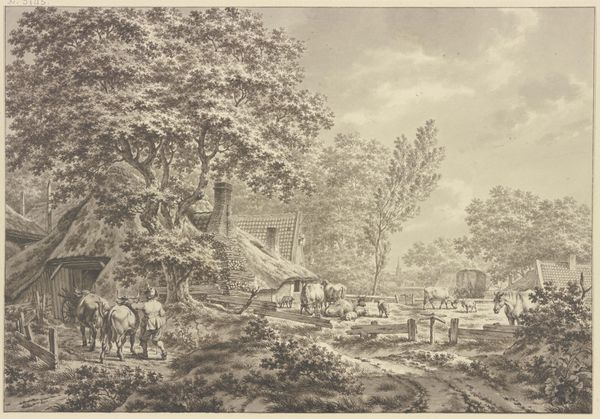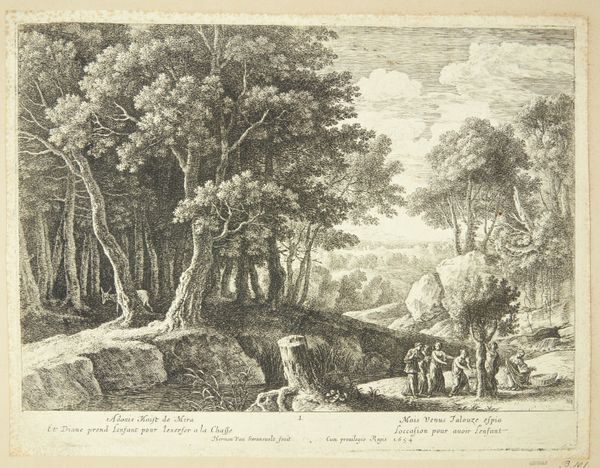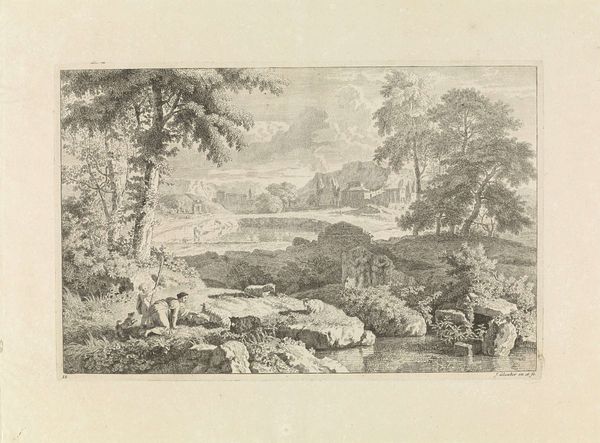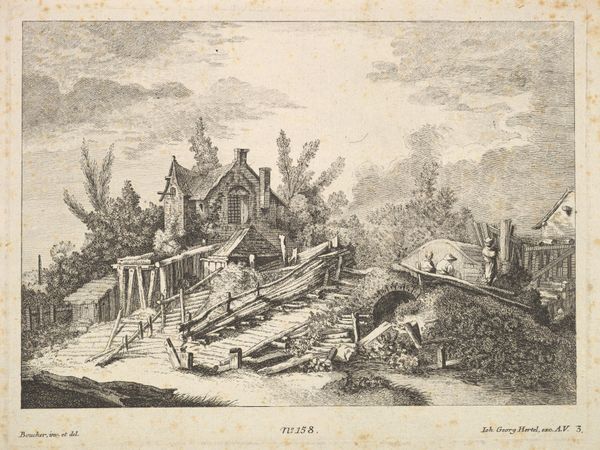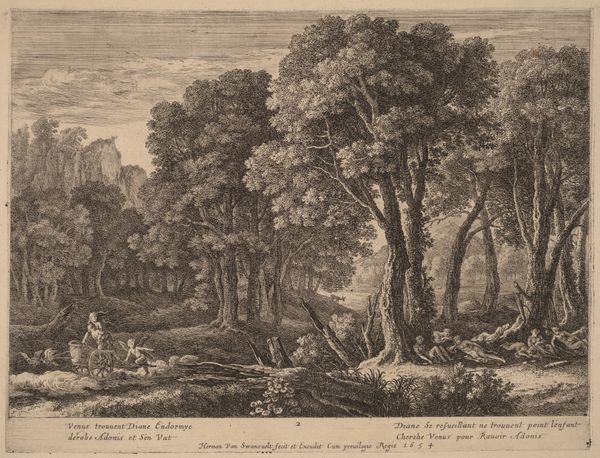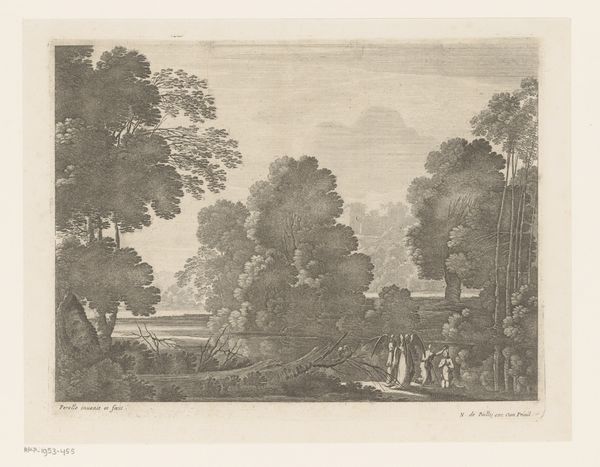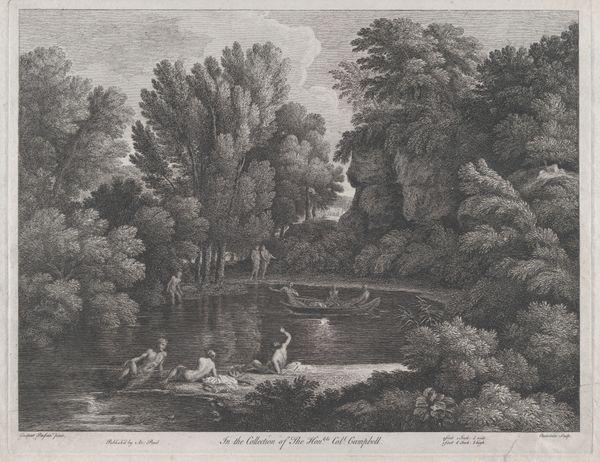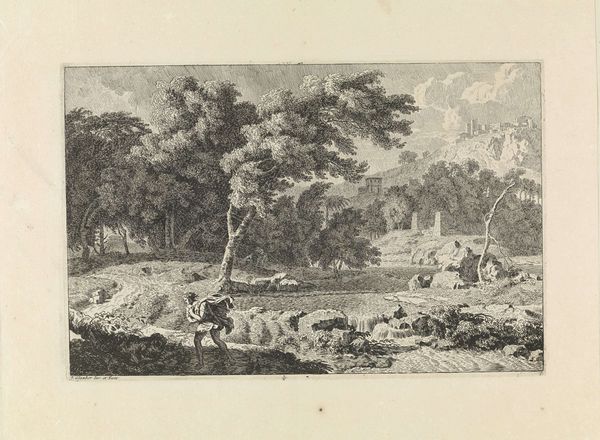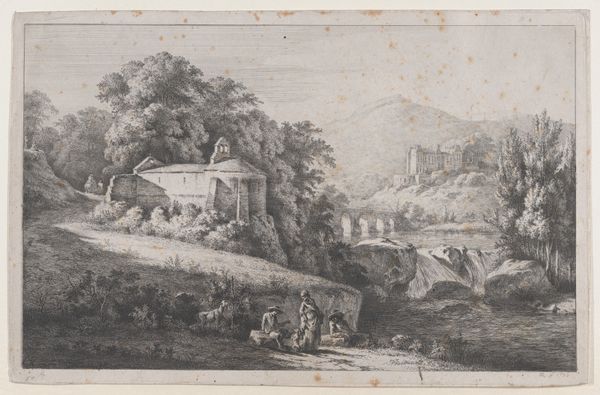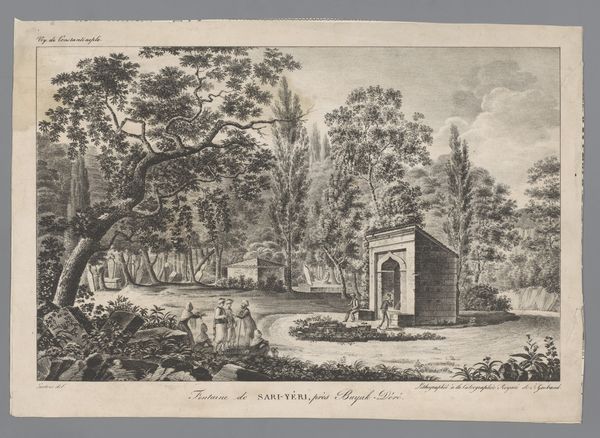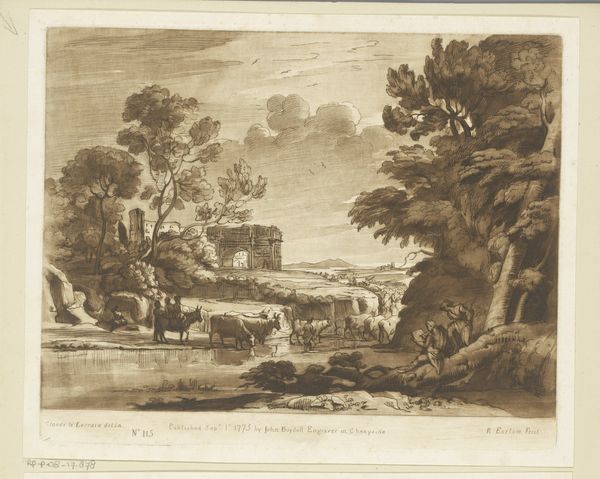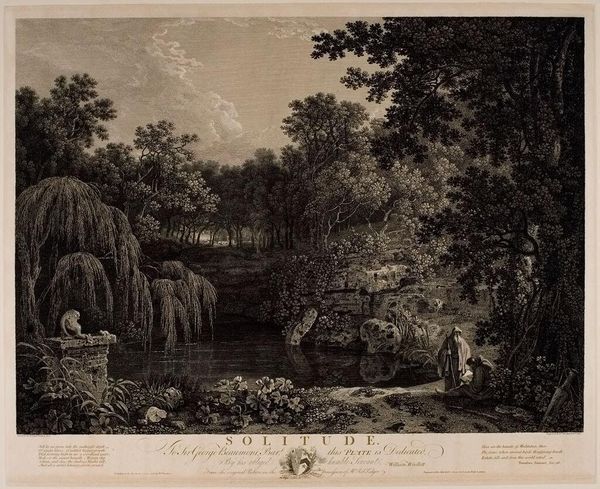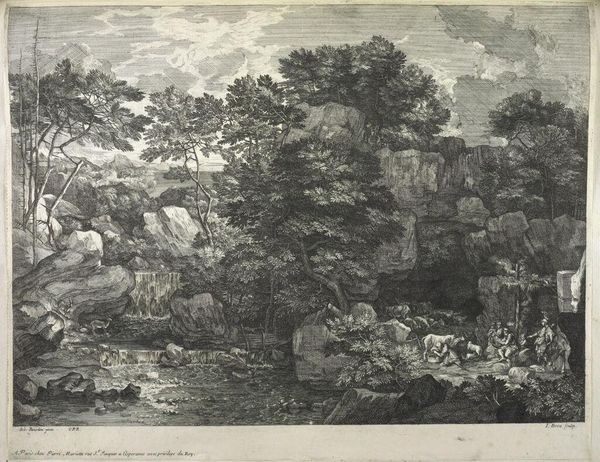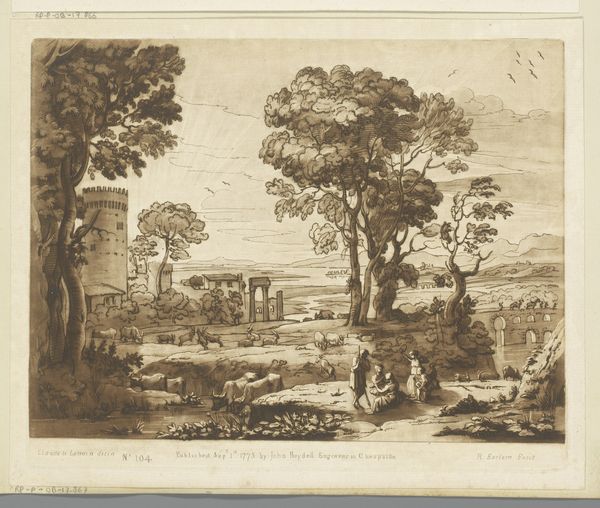
View of the Bridge of Washerwomen at the Peasant House 1725 - 1760
0:00
0:00
drawing, print, etching, engraving
#
drawing
#
baroque
# print
#
etching
#
landscape
#
engraving
Dimensions: Sheet (trimmed): 10 3/8 × 14 1/8 in. (26.4 × 35.8 cm)
Copyright: Public Domain
This print, "View of the Bridge of Washerwomen at the Peasant House," was made by Quentin Pierre Chedel in the 18th century. It depicts a humble scene, yet look closer, for even in such simplicity, echoes of deeper symbolism reside. Water, a constant motif throughout history, symbolizes purification and renewal. The washerwomen, laboring by the stream, are not merely cleaning clothes; they are participating in an act of cleansing akin to ritual purification. Notice the bridge. It appears in mythologies across cultures, and it is a powerful symbol of transition, a link between worlds, between the mundane and the spiritual. Consider the cyclical nature of water—evaporation, condensation, and precipitation—reflecting life's perpetual cycle of birth, death, and rebirth. This connects to ancient river deities such as the Celtic goddess Boann, associated with the River Boyne, embodying the river's life-giving force and cyclical nature. This humble scene thus transcends its immediate subject, engaging our collective memory and subconscious associations. It is a potent reminder that even the most mundane acts are imbued with historical and cultural significance.
Comments
No comments
Be the first to comment and join the conversation on the ultimate creative platform.
